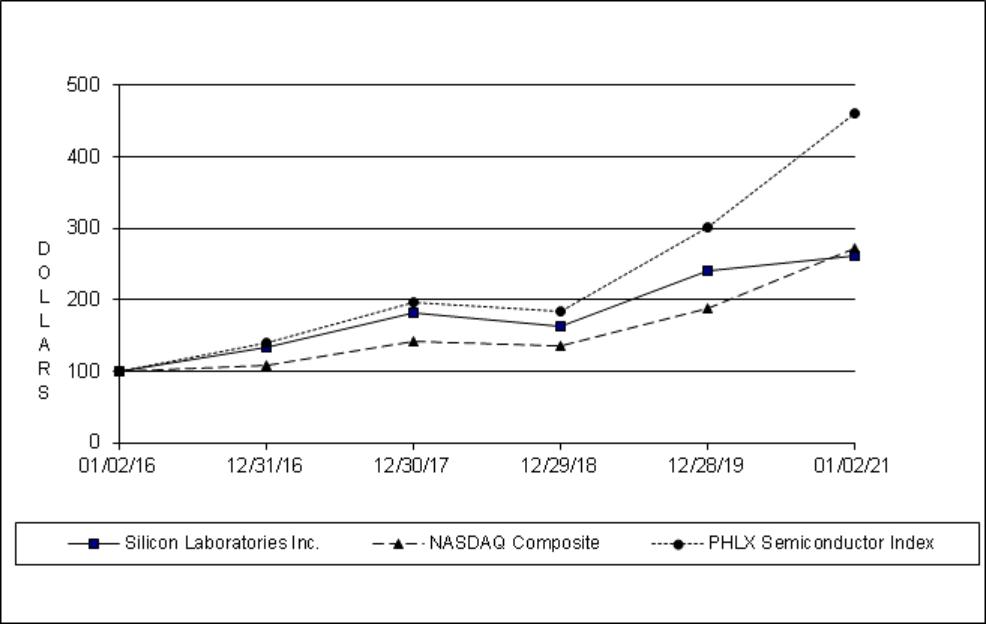We believe that we are competitive with respect to these factors, particularly because our ICs typically are smaller in size, are highly integrated, achieve high performance specifications at lower price points than competitive products and are manufactured in standard CMOS which generally enables us to supply them on a relatively rapid basis to customers to meet their product introduction schedules. However, disadvantages we face include our relatively short operating history in certain of our markets and the need for customers to redesign their products and modify their software to implement our ICs in their products.
Due to our diversified product portfolio and the numerous markets and applications we serve, we target a relatively large number of competitors. We compete with AltoBeam, Analog Devices, Aura, Broadcom, Dialog, Espressif, Infineon, Maxim Integrated Products, MaxLinear, MediaTek, Microchip, Nordic Semiconductor, NXP, Qualcomm, Rafael, Renesas, STMicroelectronics, Synaptics, Telink, Texas Instruments and others. We expect to face competition in the future from our current competitors, other manufacturers and designers of semiconductors and start-up semiconductor design companies. Our competitors may also offer bundled solutions offering a more complete product, which may negatively impact our competitive position despite the technical merits or advantages of our products. In addition, our customers could develop products or technologies internally that would replace their need for our products and would become a source of competition. We could also face competition from module makers or other systems suppliers that may include mixed-signal components in their products that could eliminate the need for our ICs.
Many of our competitors and potential competitors have longer operating histories, greater name recognition, access to larger customer bases, complementary product offerings, and significantly greater financial, sales and marketing, manufacturing, distribution, technical and other resources than us. Current and potential competitors have established or may establish financial and strategic relationships between themselves or with our existing or potential customers, resellers or other third parties. Accordingly, it is possible that new competitors or alliances among competitors could emerge and rapidly acquire significant market share.
Intellectual Property
Our future success depends in part upon our proprietary technology. We seek to protect our technology through a combination of patents, copyrights, trade secrets, trademarks and confidentiality procedures. As of January 2, 2021, we had approximately 1,771 issued or pending United States and foreign patents. Patents generally have a term of twenty years from the date they are filed. As our patent portfolio has been built over time, the remaining terms of the individual patents in our patent portfolio vary. There can be no assurance that patents will ever be issued with respect to our patent applications. Furthermore, it is possible that any patents held by us may be invalidated, circumvented, challenged or licensed to others. In addition, there can be no assurance that such patents will provide us with competitive advantages or adequately safeguard our proprietary rights. While we continue to file new patent applications with respect to our recent developments, existing patents are granted for prescribed time periods and will expire at various times in the future.
We claim copyright protection for proprietary documentation for our products. We have filed for registration, or are in the process of filing for registration, the visual images of certain ICs with the U.S. Copyright Office. We have registered the “Silicon Labs” logo and a variety of other product and product family names as trademarks in the United States and selected foreign jurisdictions. All other trademarks, service marks or trade names appearing in this report are the property of their respective owners. We also attempt to protect our trade secrets and other proprietary information through agreements with our customers, suppliers, employees and consultants, and through other customary security measures. We intend to protect our rights vigorously, but there can be no assurance that our efforts will be successful. In addition, the laws of other countries in which our products are sold may not protect our products and intellectual property rights to the same extent as the laws of the United States.
While our ability to effectively compete depends in large part on our ability to protect our intellectual property, we believe that our technical expertise and ability to introduce new products in a timely manner will be an important factor in maintaining our competitive position.
Many participants in the semiconductor and electronics industries have a significant number of patents and have frequently demonstrated a readiness to commence litigation based on allegations of patent and other intellectual property infringement. From time to time, third parties may assert infringement claims against us. We may not prevail in any such litigation or may not be able to license any valid and infringed patents from third parties on commercially reasonable terms, if at all. Litigation, regardless of the outcome, is likely to result in substantial cost and diversion of our resources, including our management’s time. Any such litigation could materially adversely affect us.
Our licenses include industry standard licenses with our vendors, such as wafer fabrication tool libraries, third-party core libraries, computer-aided design applications and business software applications.
